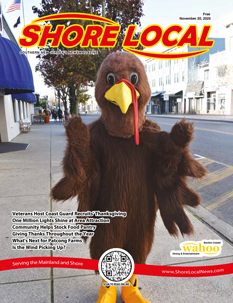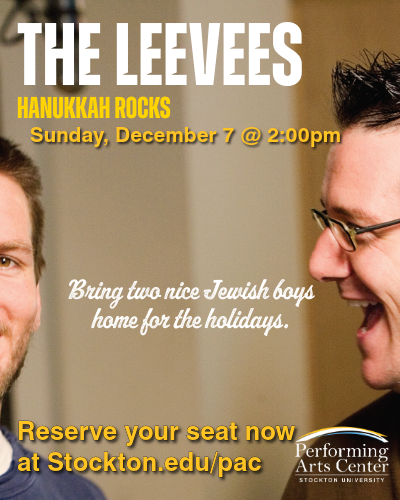Remembering When
The house that is Atlantic City was built on a foundation of providing people experiences they couldn’t have in their everyday lives. One of the chief architects was George A. Hamid who, for decades, was arguably Our Town’s most successful—and most influential—entertainment impresario.
“He was certainly one of the great entrepreneurs of Atlantic City, along with Frank Gravatt [who brought the famed Diving Horse to Steel Pier] and Capt. John Young [who built the original Million Dollar Pier],” said the preeminent Atlantic City historian, Vicki Gold Levi.
“For someone born in the Ottoman Empire, he had an uncanny instinct for what the American public wanted to see and be entertained by.”
Hamid, who died in 1971 at the age of 75, was a walking, breathing embodiment of the American Dream; his tale firmly falls under the “you can’t make this stuff up” banner.
Hamid’s early years played out in a locale about as far removed—culturally, economically geographically and topographically–from Atlantic City as one can get. He was born in the Lebanese village of Broumana. At the time, in Broumana and elsewhere in Lebanon, acrobatics were a popular pastime to the point that towns would field teams that would compete against each other. As such, by the age of 7, the boy born George Abou ben Harnid was among his hometown’s most gifted acrobats.
Besides his natural talents, young George had another asset, his uncle Abou ben Hamid, who oversaw an acrobatics troupe called the Abou ben Hamid Tumbling Arabs, which toured the world as part of the Wild West Show headlined by William “Buffalo Bill” Cody. That connection got him hired as a water boy for the company; soon enough, he was part of the cast.
Ultimately he became a featured performer. And at age 13, he was proclaimed the “world’s greatest acrobat” during a competition in New York.
It was as a performer that Hamid—who, according to the hamidcircus.com website, was taught to read and write English by none other than the legendary sharpshooter Annie Oakley–first came to Atlantic City. On what was just his second night in America, Hamid, then 12, performed at the same Steel Pier that he’d one day turn into one of the world’s most famous entertainment venues. According to various sources, he spent that night sleeping under the pier located on the Boardwalk at Virginia Avenue.
By the time he was 17, Hamid owned his own act. In 1920, he left performing to become a circus-act booking agent. In a few years, his agency was the largest booker of circus talent in the world.
Hamid, who, by the 1930s, was a principal of the Hamid-Morton Circus and also owned and operated multiple state and county fairs, planted his first flag in Atlantic City in 1938, when he entered into a 10-year lease on Million Dollar Pier at Boardwalk. But it was seven years later that Hamid would begin to truly make his mark as a local show-business giant.
In 1945, he purchased Steel Pier from Gravatt. While the complex had been a popular spot since the turn of the 20th century, under Hamid’s guidance, it would earn its reputation (as its slogan proclaimed) as “The Showplace of the Nation.”
While such crowd-pleasing attractions as the famed Diving Horse and the General Motors Exhibit had been part of Steel Pier since the 1920s, it was a far more modern creation that ignited what was arguably the complex’s Golden Age.
Unlike so many show-business promoters of the mid-to-late 1950s, Hamid eagerly—and presciently–embraced the burgeoning pop-music genre of rock & roll. As such, Steel Pier—which had hosted musical superstars from John Philip Sousa and Al Jolson to Frank Sinatra and Glenn Miller–quickly became one of the nation’s most important stops for touring rock acts.
The names of chart-toppers who didn’t play there are far easier to list those who did: Elvis Presley and The Beatles—although it was Hamid who brought the Fab Four to what was then called Convention Hall in August, 1964. Among those who did take the stages of the Marine Ballroom and Music Hall Theater were Bill Haley & the Comets, Chubby Checker, Bobby Rydel, The Rolling Stones, The Supremes and The Beach Boys. But it was on Aug. 31, 1958—six years and one day before the Beatles’ gig—that George Hamid’s Steel Pier reached its apogee: On that day, Ricky Nelson drew some 44,000 fans to the world-famous venue.
By the time Hamid died in 1971, Steel Pier, like the city in which it was located, had its best (pre-legal-casino) days in the rearview mirror. But the entertainment empire that Hamid founded continued to thrive under the aegis of Hamid’s son and namesake, George Hamid Jr., who died at age 94 in 2013.
And while Steel Pier has been owned by the Cantanoso family for many years, it stands today as a monument to the show business visionary who out of talent, passion and pure love of the entertainment realm, turned it into an enduring Atlantic City icon.
















